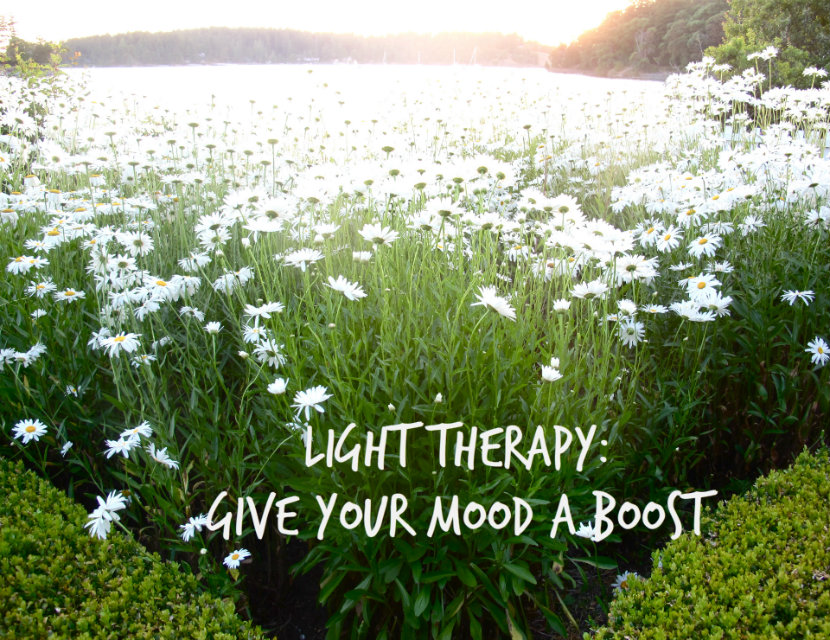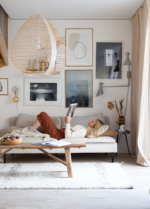Light Therapy give your mood a boost
Winter is often the time of year for seasonal depression, pretty common in the northern countries. In the wintertime, with shorter days and longer nights, we often feel tired and have a hard time getting up in the morning. When we feel drained and slightly depressed in the evening, note that some of this lethargy comes from minimal exposure to light!
The Finns and the Danes are the pioneers in the field of research in light therapy. In addition, a Danish doctor named Niels Ryberg Finsen has received the Nobel price in medicine for his work on this topic.
The serotonin – also known as a “zen” hormone – takes care of well-being and sunny disposition. The melatonin – a sleep hormone – takes care of sleep, rest, constructions and repairs.
Light acts directly on two neurotransmitters: serotonin and melatonin, which are the chemicals in the brain that regulate our moods. Our brain produces serotonin during the day, in relation with the daylight. At night, it produces melatonin. The serotonin – also known as a “zen” hormone – takes care of well-being and sunny disposition. The melatonin – a sleep hormone – takes care of sleep, rest, constructions and repairs.
During the winter, when there is less light intensity, the alarm clock goes off when it is still pitch dark outside. The body reacts to the confusion induced by the fact that your eyes are open while your body is still filled with melatonin.
There is a routing process in the body that starts at the level of the retina and regulates the fabrication of either hormone. When luminosity decreases, serotonin turns into melatonin, which induces sleep. Then, in the morning, when luminosity increases, serotonin is blocked from turning into melatonin, and the concentration of serotonin increases.
During the winter, when there is less light intensity, the alarm clock goes off when it is still pitch dark outside. The body reacts to the confusion induced by the fact that your eyes are open while your body is still filled with melatonin. As a result, all you want is to go back to sleep.
Because of this offset, your metabolism will continue to produce melatonin during the day, which causes a lack of serotonin that, in turn, explains why you could feel tired and depressed. All day long your body is then fighting against this melatonin, which will make it more difficult to fall asleep at night. This vicious cycle leads to a general decrease in vital energy.
Fortunately, light therapy can help you fight these symptoms and regulate your mood.
WHAT
You need to buy a special 10,000-lux lamp, without UV or infrared light, that has a color temperature of 4000K. This device must be recognized as a medical supply and must meet the quality standards ISO 46003 / 2000. These technical requirements are very important.
HOW
It is best to use the lamp in the morning when you wake up and for at least 20 minutes. You can use the lamp as you are eating your breakfast. This will inform the body that you are now on day mode. In the evening, you should use it again during 20 minutes and until 7pm or 8pm but no later than that.
After 8pm, you need to decrease the luminosity in your house by stages and avoid the stimulation of the retina with TV or computer, in order to balance your internal clock, regulate the entry into a good quality sleep mode.
You don’t have to stay in front of the lamp. You may place the lamp in one of your favorite spots, for example in the kitchen while you are preparing a meal, in the bathroom while you are taking a bath, next to your office when you are working.
Don’t forget: After 8pm, you need to decrease the luminosity in your house by stages and avoid the stimulation of the retina with TV or computer, in order to balance your internal clock, regulate the entry into a good quality sleep mode.
WHEN
Follow this protocol for at least 15 days, when you feel that your mood is affected and you are tired. For people working in an artificial light environment, it is recommended to follow this light therapy treatment from mid-October until mid-March as a routine.
Marie-Laure de Clermont-Tonnerre is a journalist and author.
«La médecine personnalisée, retrouver et garder la santé» (Odile Jacob) was published in March 2012 after two years of investigation and research with general practitioner Dr. Jean-Claude Lapraz.
«Se soigner toute l’année au Naturel» (Prat) was published in 2012 and has sold over 250 000 copies. Her latest book «Etre en Bonne santé toute l’année : 20 cures alimentaires» was launched in April 2015.






